CHINA UND JAPAN VON W.
BURGER
NO269 Ansicht von Nagasaki


LA CHINA ET JAPON
par G.BURGER.
von W.BURGER
No274 Ausicht von Nagasaki.


178×87mm
PUBLISHED BY D.R.CLARK
NORTH PENNSYLVANIA STREET
Asiatic and Tropical Views


26 Nagasaki, Japan
176×87mm
.

52 Temple in Japan
177×100mm

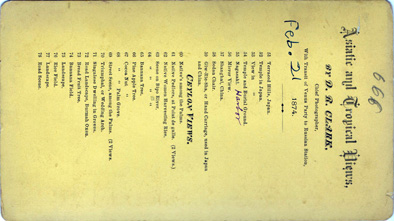
55 Nagasaki.
177×100mm
参 考
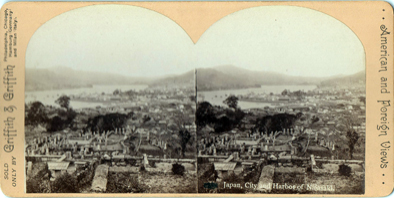
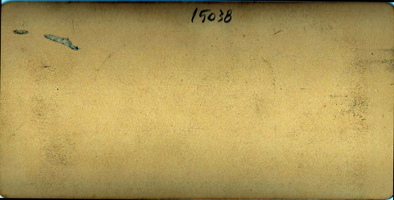
Griffith & Griffith American and Foreign Views Philadelphia, Chicago, Hamburg(Germany) and Milan(Italy)
Japan, City and Harbor Nagasaki
178×90mm
CHINE & JAPON B K Editour
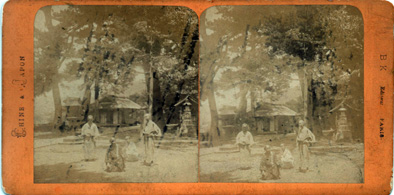

Officier firetis et lorn entigues japonaris de Nacha-Saki
177×88mm
CHINE & JAPON B.K.EDIT PARIS
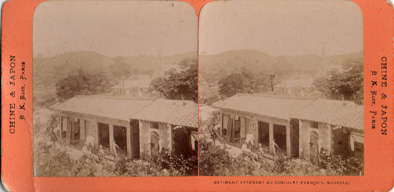
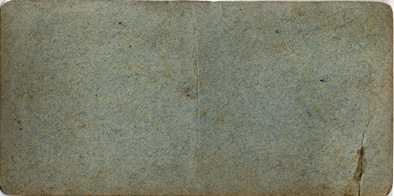
BATIMENT ATTENANT AU CONSULAT FRANCAIS NAGASAKI.
176×86mm
CHINE & JAPON B.K.EDIT PARIS

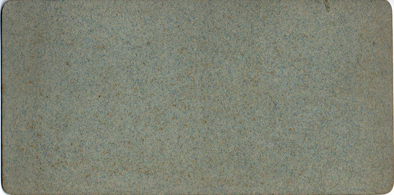
NAGASAKI PONT ET RUE JAPONAISE
176×87mm
CHINE & JAPON B K Editeur PARIS

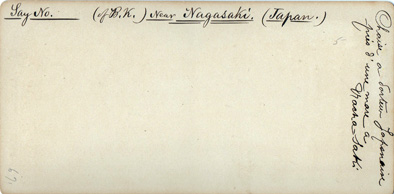
Near Nagasaki.(Japan.) Chaise a Sarteur Japanaise fries I' une mare a Nacka-Saki
175×87mm
CHINE & JAPON B K Editeur PARIS

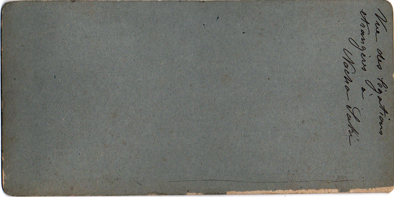
Vew des Legations entrangius e Naka Saki
176×88mm
47 RADE DE NAGASAKI VUE DU JAPON


174×86mm
NO269 Ansicht von Nagasaki
LA CHINA ET JAPON
par G.BURGER.
von W.BURGER
No274 Ausicht von Nagasaki.
178×87mm
PUBLISHED BY D.R.CLARK
NORTH PENNSYLVANIA STREET
Asiatic and Tropical Views


26 Nagasaki, Japan
176×87mm
.


52 Temple in Japan
177×100mm


55 Nagasaki.
177×100mm
参 考


Griffith & Griffith American and Foreign Views Philadelphia, Chicago, Hamburg(Germany) and Milan(Italy)
Japan, City and Harbor Nagasaki
178×90mm
CHINE & JAPON B K Editour


Officier firetis et lorn entigues japonaris de Nacha-Saki
177×88mm
CHINE & JAPON B.K.EDIT PARIS


BATIMENT ATTENANT AU CONSULAT FRANCAIS NAGASAKI.
176×86mm
CHINE & JAPON B.K.EDIT PARIS


NAGASAKI PONT ET RUE JAPONAISE
176×87mm
CHINE & JAPON B K Editeur PARIS


Near Nagasaki.(Japan.) Chaise a Sarteur Japanaise fries I' une mare a Nacka-Saki
175×87mm
CHINE & JAPON B K Editeur PARIS


Vew des Legations entrangius e Naka Saki
176×88mm
47 RADE DE NAGASAKI VUE DU JAPON
174×86mm
14027-A Japanese Tea House in
the Park, Nagasaki, Japan.
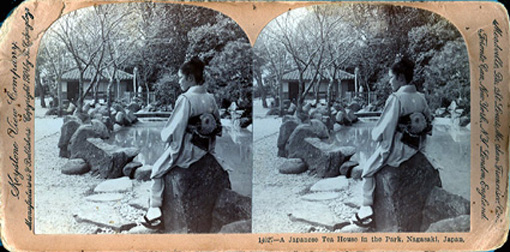
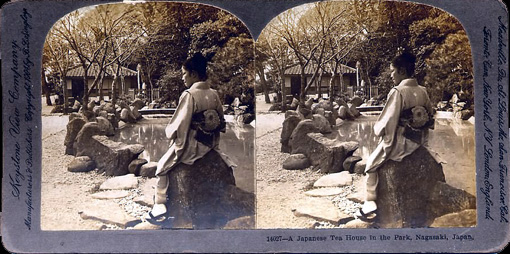
There is an air of the kindergareten about Japanese life and customs, so many things are on a childish scale. In the parks and gardens the lakes are scarcely large enough for fairies; the rivers and mountains are little larger than those on a good -sized relief map, "Near at hand they rear a delicious little tea-house and sit there sipping ridieulously small doses of sake, from thimble-like cups, nibbling such tiny biscuits as might satisfy the appetite of a butterfly, smoking microscopic pipes of brass and bamboo, which hold about three whiffs, and generally thus lookinfg upon life through a reversed telescope, and making delicate and friendly fun out of all its aspect" (Arnold.)
There is music, too, at the tea-house; here is one of the songs, composed by an American officer:
I strive to make love, but in vain, in vain.
My language, I know, is not plain, not plain.
Whenever I try,
She says, "Go men nasai Watashi wakarimasen-masen."
She plays om the soft samosen, samisen.
She sings me a song now and then- and then.
And when I go away
She sweetly will say,
"Sayonara! Do please come again -again."
"Deign honorably to excuse me, but I do not understand."
Keystone View Company.
There is an air of the kindergareten about Japanese life and customs, so many things are on a childish scale. In the parks and gardens the lakes are scarcely large enough for fairies; the rivers and mountains are little larger than those on a good -sized relief map, "Near at hand they rear a delicious little tea-house and sit there sipping ridieulously small doses of sake, from thimble-like cups, nibbling such tiny biscuits as might satisfy the appetite of a butterfly, smoking microscopic pipes of brass and bamboo, which hold about three whiffs, and generally thus lookinfg upon life through a reversed telescope, and making delicate and friendly fun out of all its aspect" (Arnold.)
There is music, too, at the tea-house; here is one of the songs, composed by an American officer:
I strive to make love, but in vain, in vain.
My language, I know, is not plain, not plain.
Whenever I try,
She says, "Go men nasai Watashi wakarimasen-masen."
She plays om the soft samosen, samisen.
She sings me a song now and then- and then.
And when I go away
She sweetly will say,
"Sayonara! Do please come again -again."
"Deign honorably to excuse me, but I do not understand."
Keystone View Company.
14002-Osua Temple, Nagasaki, Japan
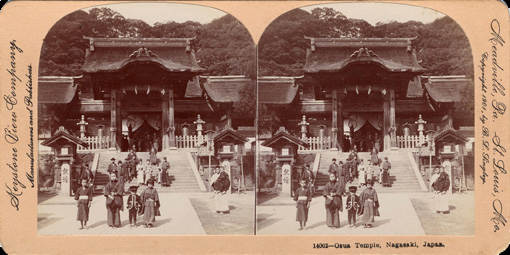
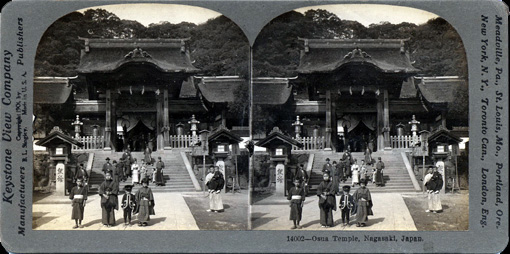
(60)
Great Asia, mother of gods and men! All the religions of the world that are above mere fetishisms
are of Asiatic origin. Of these Japan has two, the native Shintoism and imported Buddhism,-and now a vital and aggressive Christianity. Buddhism and Shintoism are not strictly exclusive of each other. Most Japanese are Shinoto-Buddhists.
For a thousand years Buddhist priests performed the services at the Shinto temples, and Buddist architecture was largely adopted in building them.
Shintoism, the primitive religion of Japan, is a compound of nature-worship and ancestor-worship,- the latter feature probably an early import from China. The Sun-Goddess is the chief deity, and beneath her are gods and goddesses of the wind, the ocean, fire of mountains, streams and trees,- 800 myriads of deities.
This religion dose not concern itself with man's moral conduct or future destiny.
The principal temple at Nagasaki is the Osuwa,
known as the Bronze Horse Temple from a votive offering standing in the courtyard.
A beautiful garden is attached to this shrine. The trees recall the soft beauty of verdure of
Killarney and south Irish coast.
From Nagasaki to Kamakura, near Tokio, is 600 miles east and north.
Published Underwood & Underwood
(100)-3939-Coaling the Paoifio Mail S.S, "Shiberia" at fortified Nagasaki, Japan
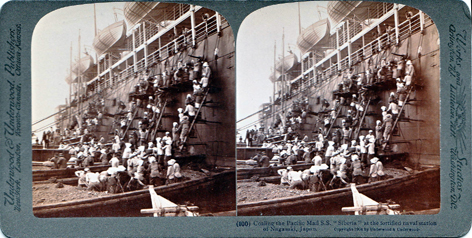

You are Iooking from the pier up the towering
side of one of the great ocean-liners plying between
here and San Francisco, a journey of 4,800 miles
taking from fourteen to eighteen days. This is
the way the coaling for the voyage is accomplished.
Those lighters that you see drawn up alongside
the Siberia have brought supplied from a great
colliery and these women and girls are loading
up the vessel ready for her start at the appointed
hour. Certain ones keep certain places on those
ladders, while others down here in the lighters
fill the coal baskets. The full baskets are passed
from hand to hand up the ladders and into the
bins, the emptied baskets are returned by another
set of girls and so a steady upward stream of coal
is kept flowing the bins like water from an
old fashioned chain-pump.
The towels the women wear over their heads
are a valuable protection against some part of
the dirt and dust of their trade, but they are
not peculiar to this line of work. All Japanese
peasant women wear such towels as head-cover-
ings when engaged in out-of-door work.
You can see in the distanee just a glimpse of
the lofty hills surrounding the harbor. You
remember this is one of the best fortified harbors
ln Japan. Her war vessels come in here for coal,
as well as peaceful merchant men, and the coal
ing of Japan's armored l vessels means a serious
business. Some of the finest war-ships now
afloat are coaled here at Nagsaki.lf you refer
to a map on the Mikado's empire you see that
this haven is only about two hundred mlies from
the Korean port of Fusan.
From Notes of Travel, No.8, copyright, by
Underwood & Underwood.
Coalling an ocean Steamship at Nagasaki, Japan.
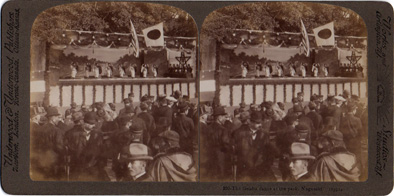
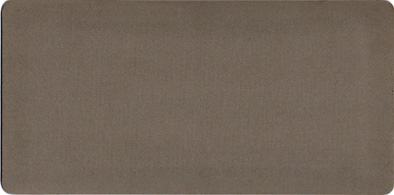
350 The Geisha dance at the park Nagasaki. 119914
Views in Japan
Thomas Houseworth & Co. San Francisco.
63.Harbor of Nagasaki. Japan
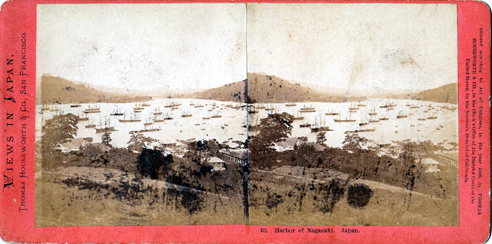
Entered according to act of congress, in the year 1869, by THOMAS HOUSEWORTH & CO. in the Clerk's office of the Distinkt Court of the United States, for the Noethen District of Calfornia.

Oriental Scenary
published by Thomas Houseworth & Co.
317&319
Montgomery Street,
SAN FRANCISCO.
awared the PRIZE MEDAL at the PARIS INTERNATIONAL EXHIBITION,1867,
for the Finest Photographs of Scenery on the Pacific Coast
99 Keystone View Company
Copyrighted. Underwood & Underwood
Manufactures made in U.S.A. Publishers

(99) 3938-Looking N. to fortified hills above port of Nagasaki, Japan
Meadville, Pa., New York, N.Y., Portland, Oregon, LoNDON, Eng., Sydney, Aus.
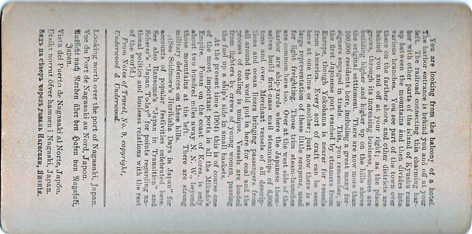
You are looking from the balcony of a hotel. The harbor entrance is behind you and off at your left. The railroad connecting this charming harbor with other parts of the island of Kyushu runs up between the mountains and then divedes into varioius branches. You see part of the town over there on the farther shore, and other districts are behind you and off at your right; as the place grows, through uts increasing business, houses are building higher and higher up to on the hills above the original settlement. There are now more than 100.000 residents here., including a great many foreigners engaged in trade. This , you remenber, is the fiest Japanese port reached by streamers from Europe, through Yokohama is nearer for vessels from America. Every sort of craft can be seen here at one time or another; just now there is a large representation of these little sampans, used for light freighting. Those trim stream-launches are common here too. Over at the west side of the harbor are ship-yards where the Japanese temselves built first-class mail streamships of 6,000 tons and over. Merchant vessels of all descriptions and ocean liners bringing passengers from all around rhe world put in here for coal and the process of coaling is unique. Vessls are loaded from lighters by crewws of young women, passing the fuel up a ship's side in small baskets. At the present time (1904) this is of course one of the most important ports in all the Mikado's Empire. Fusa on the coast of Korea, is only about two bundred miles away N.N.W., beyoud those mountains at the left. There are strong military defences on these hills. (See Seidmore's Jinrikisha Days in Japan" for accounts of popular festivities celebrated here. See also Ransome's " Japan in Transition" and Scherer's "Japan Today " for poimts regarding nation politics and business relations witj the rest of the world.)
From Notes of Travel, No. 9, copyright, Underwood & Underwood.
Loooking north over the port of Nagasaki, Japan.
Vue du Port de Nagasaki au Noed, Japon
Vista del Puerto de Nagasaki al Norte, Japon
Utsikt norrut ofver hamnen i Nagasaki, Japan.
Keystone Views Company,
Manufactures and Publishers

14000-Birdseyes View of Nagasakii and Its Beautiful Habor, Japan.
Meadville Pa. St. Louis, Ma.
Copyright 1901 by B. L. Singley.

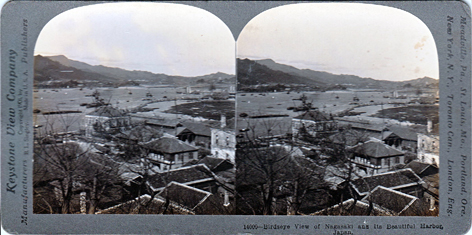
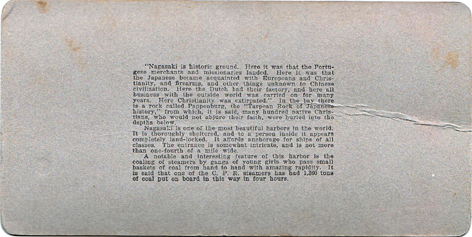
"Nagasaki is historic ground. Here it was that the Portugese merchants and missinarise landed. Here it was that Japanese became acquainted with Europeans and Christianity, and flrearms, and other things unknown to Chinese civilization. Here the Dutch had their factory, and here all business with the outside world was carried on for many years. Here Ckristianity was extripated. " In the bay there is a rock called Pappenburg, the " Tarpean Rock of Japanease history." from which, it is said many hundred native Cristians, who would not abjure their faith, were buried into the depths below. Nagasaki is one of the mosy beautiful hatbor in the world. It is thoroughly sheltered, and to a person inside it appears completely land-locked. It affords anchorage for ships of all classes. The entrance is somewhat intricate, and is not more than one-fourth of mile wide. A notable and interesting feature of this harbor is the coaling of steamers by gangs of young giels who pass small baskets of coal from hand to hand with amazing rapidity. It is said that one of the C.P.R. steamers has had 1.360 tons of coal put on board in this way in four hours.
506 Entrance to Nagasaki Harbour

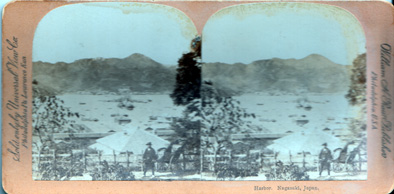
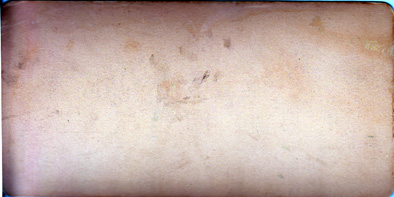
Harbor. Nagasaki、Japan.
Sold only by Universal View Co.
Philadelphia Pa. Lawrence Kan.
William H. Raw Publisher
Philadelphia. U.S.A.
178×89mm
撮影地不明
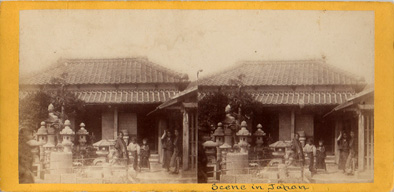

Scene in Japan


74×75(84×173)mm
(60)
Great Asia, mother of gods and men! All the religions of the world that are above mere fetishisms
are of Asiatic origin. Of these Japan has two, the native Shintoism and imported Buddhism,-and now a vital and aggressive Christianity. Buddhism and Shintoism are not strictly exclusive of each other. Most Japanese are Shinoto-Buddhists.
For a thousand years Buddhist priests performed the services at the Shinto temples, and Buddist architecture was largely adopted in building them.
Shintoism, the primitive religion of Japan, is a compound of nature-worship and ancestor-worship,- the latter feature probably an early import from China. The Sun-Goddess is the chief deity, and beneath her are gods and goddesses of the wind, the ocean, fire of mountains, streams and trees,- 800 myriads of deities.
This religion dose not concern itself with man's moral conduct or future destiny.
The principal temple at Nagasaki is the Osuwa,
known as the Bronze Horse Temple from a votive offering standing in the courtyard.
A beautiful garden is attached to this shrine. The trees recall the soft beauty of verdure of
Killarney and south Irish coast.
From Nagasaki to Kamakura, near Tokio, is 600 miles east and north.
Published Underwood & Underwood
(100)-3939-Coaling the Paoifio Mail S.S, "Shiberia" at fortified Nagasaki, Japan
You are Iooking from the pier up the towering
side of one of the great ocean-liners plying between
here and San Francisco, a journey of 4,800 miles
taking from fourteen to eighteen days. This is
the way the coaling for the voyage is accomplished.
Those lighters that you see drawn up alongside
the Siberia have brought supplied from a great
colliery and these women and girls are loading
up the vessel ready for her start at the appointed
hour. Certain ones keep certain places on those
ladders, while others down here in the lighters
fill the coal baskets. The full baskets are passed
from hand to hand up the ladders and into the
bins, the emptied baskets are returned by another
set of girls and so a steady upward stream of coal
is kept flowing the bins like water from an
old fashioned chain-pump.
The towels the women wear over their heads
are a valuable protection against some part of
the dirt and dust of their trade, but they are
not peculiar to this line of work. All Japanese
peasant women wear such towels as head-cover-
ings when engaged in out-of-door work.
You can see in the distanee just a glimpse of
the lofty hills surrounding the harbor. You
remember this is one of the best fortified harbors
ln Japan. Her war vessels come in here for coal,
as well as peaceful merchant men, and the coal
ing of Japan's armored l vessels means a serious
business. Some of the finest war-ships now
afloat are coaled here at Nagsaki.lf you refer
to a map on the Mikado's empire you see that
this haven is only about two hundred mlies from
the Korean port of Fusan.
From Notes of Travel, No.8, copyright, by
Underwood & Underwood.
Coalling an ocean Steamship at Nagasaki, Japan.


350 The Geisha dance at the park Nagasaki. 119914
Views in Japan
Thomas Houseworth & Co. San Francisco.
63.Harbor of Nagasaki. Japan
Entered according to act of congress, in the year 1869, by THOMAS HOUSEWORTH & CO. in the Clerk's office of the Distinkt Court of the United States, for the Noethen District of Calfornia.
Oriental Scenary
published by Thomas Houseworth & Co.
317&319
Montgomery Street,
SAN FRANCISCO.
awared the PRIZE MEDAL at the PARIS INTERNATIONAL EXHIBITION,1867,
for the Finest Photographs of Scenery on the Pacific Coast
99 Keystone View Company
Copyrighted. Underwood & Underwood
Manufactures made in U.S.A. Publishers
(99) 3938-Looking N. to fortified hills above port of Nagasaki, Japan
Meadville, Pa., New York, N.Y., Portland, Oregon, LoNDON, Eng., Sydney, Aus.
You are looking from the balcony of a hotel. The harbor entrance is behind you and off at your left. The railroad connecting this charming harbor with other parts of the island of Kyushu runs up between the mountains and then divedes into varioius branches. You see part of the town over there on the farther shore, and other districts are behind you and off at your right; as the place grows, through uts increasing business, houses are building higher and higher up to on the hills above the original settlement. There are now more than 100.000 residents here., including a great many foreigners engaged in trade. This , you remenber, is the fiest Japanese port reached by streamers from Europe, through Yokohama is nearer for vessels from America. Every sort of craft can be seen here at one time or another; just now there is a large representation of these little sampans, used for light freighting. Those trim stream-launches are common here too. Over at the west side of the harbor are ship-yards where the Japanese temselves built first-class mail streamships of 6,000 tons and over. Merchant vessels of all descriptions and ocean liners bringing passengers from all around rhe world put in here for coal and the process of coaling is unique. Vessls are loaded from lighters by crewws of young women, passing the fuel up a ship's side in small baskets. At the present time (1904) this is of course one of the most important ports in all the Mikado's Empire. Fusa on the coast of Korea, is only about two bundred miles away N.N.W., beyoud those mountains at the left. There are strong military defences on these hills. (See Seidmore's Jinrikisha Days in Japan" for accounts of popular festivities celebrated here. See also Ransome's " Japan in Transition" and Scherer's "Japan Today " for poimts regarding nation politics and business relations witj the rest of the world.)
From Notes of Travel, No. 9, copyright, Underwood & Underwood.
Loooking north over the port of Nagasaki, Japan.
Vue du Port de Nagasaki au Noed, Japon
Vista del Puerto de Nagasaki al Norte, Japon
Utsikt norrut ofver hamnen i Nagasaki, Japan.
Keystone Views Company,
Manufactures and Publishers
14000-Birdseyes View of Nagasakii and Its Beautiful Habor, Japan.
Meadville Pa. St. Louis, Ma.
Copyright 1901 by B. L. Singley.
"Nagasaki is historic ground. Here it was that the Portugese merchants and missinarise landed. Here it was that Japanese became acquainted with Europeans and Christianity, and flrearms, and other things unknown to Chinese civilization. Here the Dutch had their factory, and here all business with the outside world was carried on for many years. Here Ckristianity was extripated. " In the bay there is a rock called Pappenburg, the " Tarpean Rock of Japanease history." from which, it is said many hundred native Cristians, who would not abjure their faith, were buried into the depths below. Nagasaki is one of the mosy beautiful hatbor in the world. It is thoroughly sheltered, and to a person inside it appears completely land-locked. It affords anchorage for ships of all classes. The entrance is somewhat intricate, and is not more than one-fourth of mile wide. A notable and interesting feature of this harbor is the coaling of steamers by gangs of young giels who pass small baskets of coal from hand to hand with amazing rapidity. It is said that one of the C.P.R. steamers has had 1.360 tons of coal put on board in this way in four hours.
506 Entrance to Nagasaki Harbour
Harbor. Nagasaki、Japan.
Sold only by Universal View Co.
Philadelphia Pa. Lawrence Kan.
William H. Raw Publisher
Philadelphia. U.S.A.
178×89mm
撮影地不明


Scene in Japan
General View Jeda [Tokyo] Japan Stereo
Rossier 1859 Negretti & Zambra Series 67


74×75(84×173)mm